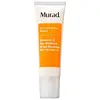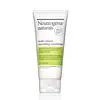What's inside
What's inside
 Key Ingredients
Key Ingredients

 Benefits
Benefits

 Concerns
Concerns

 Ingredients Side-by-side
Ingredients Side-by-side

Butyl Methoxydibenzoylmethane 3%
UV AbsorberHomosalate 6.5%
Skin ConditioningEthylhexyl Methoxycinnamate 7.5%
UV AbsorberEthylhexyl Salicylate 5%
UV AbsorberBenzophenone-3 2%
UV AbsorberWater
Skin ConditioningButylene Glycol
HumectantStearic Acid
CleansingDiisopropyl Sebacate
EmollientCocoglycerides
EmollientLauryl Lactate
EmollientGlyceryl Stearate
EmollientPEG-100 Stearate
Isodecyl Neopentanoate
EmollientDimethicone
EmollientCetyl Alcohol
EmollientCetyl Phosphate
EmulsifyingUrea
BufferingYeast Amino Acids
HumectantTrehalose
HumectantInositol
HumectantTaurine
BufferingBetaine
HumectantPhospholipids
Skin ConditioningRetinyl Palmitate
Skin ConditioningTocopheryl Acetate
AntioxidantAscorbyl Palmitate
AntioxidantPelvetia Canaliculata Extract
Skin ProtectingEctoin
Skin ConditioningGinkgo Biloba Leaf Extract
Skin ConditioningVitis Vinifera Seed Extract
AntimicrobialPassiflora Incarnata Extract
AstringentTetrahexyldecyl Ascorbate
AntioxidantSodium PCA
HumectantPanthenol
Skin ConditioningTripleurospermum Maritimum Extract
Skin ProtectingZinc Gluconate
Skin ConditioningEthyl Linoleate
EmollientMagnesium Aluminum Silicate
AbsorbentXanthan Gum
EmulsifyingAminomethyl Propanol
BufferingDisodium EDTA
Phenoxyethanol
PreservativeCaprylyl Glycol
EmollientChlorphenesin
AntimicrobialLimonene
PerfumingLinalool
PerfumingParfum
MaskingCI 15985
Cosmetic ColorantCI 17200
Cosmetic ColorantButyl Methoxydibenzoylmethane 3%, Homosalate 6.5%, Ethylhexyl Methoxycinnamate 7.5%, Ethylhexyl Salicylate 5%, Benzophenone-3 2%, Water, Butylene Glycol, Stearic Acid, Diisopropyl Sebacate, Cocoglycerides, Lauryl Lactate, Glyceryl Stearate, PEG-100 Stearate, Isodecyl Neopentanoate, Dimethicone, Cetyl Alcohol, Cetyl Phosphate, Urea, Yeast Amino Acids, Trehalose, Inositol, Taurine, Betaine, Phospholipids, Retinyl Palmitate, Tocopheryl Acetate, Ascorbyl Palmitate, Pelvetia Canaliculata Extract, Ectoin, Ginkgo Biloba Leaf Extract, Vitis Vinifera Seed Extract, Passiflora Incarnata Extract, Tetrahexyldecyl Ascorbate, Sodium PCA, Panthenol, Tripleurospermum Maritimum Extract, Zinc Gluconate, Ethyl Linoleate, Magnesium Aluminum Silicate, Xanthan Gum, Aminomethyl Propanol, Disodium EDTA, Phenoxyethanol, Caprylyl Glycol, Chlorphenesin, Limonene, Linalool, Parfum, CI 15985, CI 17200
Water
Skin ConditioningDicaprylyl Carbonate
EmollientGlycerin
HumectantGlyceryl Stearate
EmollientCetearyl Alcohol
EmollientHeptyl Undecylenate
EmollientPlukenetia Volubilis Seed Oil
EmollientCetearyl Olivate
Sorbitan Olivate
EmulsifyingStearic Acid
CleansingGluconolactone
Skin ConditioningBenzyl Alcohol
PerfumingEthylhexylglycerin
Skin ConditioningSclerotium Gum
Emulsion StabilisingTocopherol
AntioxidantSodium Benzoate
MaskingParfum
MaskingIlex Paraguariensis Leaf Extract
PerfumingMaltodextrin
AbsorbentCaesalpinia Spinosa Gum
Skin ConditioningHydrolyzed Caesalpinia Spinosa Gum
AbsorbentWater, Dicaprylyl Carbonate, Glycerin, Glyceryl Stearate, Cetearyl Alcohol, Heptyl Undecylenate, Plukenetia Volubilis Seed Oil, Cetearyl Olivate, Sorbitan Olivate, Stearic Acid, Gluconolactone, Benzyl Alcohol, Ethylhexylglycerin, Sclerotium Gum, Tocopherol, Sodium Benzoate, Parfum, Ilex Paraguariensis Leaf Extract, Maltodextrin, Caesalpinia Spinosa Gum, Hydrolyzed Caesalpinia Spinosa Gum
Ingredients Explained
These ingredients are found in both products.
Ingredients higher up in an ingredient list are typically present in a larger amount.
Glyceryl Stearate is a mix of glycerin and stearic acid.
It is used to stabilize the mixing of water and oil ingredients. By preventing these ingredients from separating, it can help elongate shelf life. It can also help thicken the product's texture.
As an emollient, it helps soften skin and supports barrier-replenishing ingredients.
In cosmetics, Glyceryl Stearate is often made from vegetable oils or synthetically produced.
This ingredient may not be fungal-acne safe
Fun fact: The human body also creates Glyceryl Stearate naturally.
Learn more about Glyceryl StearateParfum is a catch-all term for an ingredient or more that is used to give a scent to products.
Also called "fragrance", this ingredient can be a blend of hundreds of chemicals or plant oils. This means every product with "fragrance" or "parfum" in the ingredients list is a different mixture.
For instance, Habanolide is a proprietary trade name for a specific aroma chemical. When used as a fragrance ingredient in cosmetics, most aroma chemicals fall under the broad labeling category of “FRAGRANCE” or “PARFUM” according to EU and US regulations.
The term 'parfum' or 'fragrance' is not regulated in many countries. In many cases, it is up to the brand to define this term.
For instance, many brands choose to label themselves as "fragrance-free" because they are not using synthetic fragrances. However, their products may still contain ingredients such as essential oils that are considered a fragrance by INCI standards.
One example is Calendula flower extract. Calendula is an essential oil that still imparts a scent or 'fragrance'.
Depending on the blend, the ingredients in the mixture can cause allergies and sensitivities on the skin. Some ingredients that are known EU allergens include linalool and citronellol.
Parfum can also be used to mask or cover an unpleasant scent.
The bottom line is: not all fragrances/parfum/ingredients are created equally. If you are worried about fragrances, we recommend taking a closer look at an ingredient. And of course, we always recommend speaking with a professional.
Learn more about ParfumStearic Acid is a fatty acid. It is an emollient, emulsifier, and texture enhancer.
As an emollient, stearic acid helps soften skin. It aids the skin's protective barrier by preventing water loss. It also provides a gentle cleansing effect without stripping away natural oils.
Stearic acid may also be used to enhance the texture of products. It can add volume and stabilize ingredients such as water and oil. This can help water and oil ingredients from separating.
Sources of stearic acid include animal or vegetable fats/oils such as coconut or shea. It can be naturally found in butter, cocoa butter, shea butter, vegetable fats, and animal tallow.
This ingredient may not be Malassezia folliculitis, or fungal-acne safe.
Learn more about Stearic AcidWater. It's the most common cosmetic ingredient of all. You'll usually see it at the top of ingredient lists, meaning that it makes up the largest part of the product.
So why is it so popular? Water most often acts as a solvent - this means that it helps dissolve other ingredients into the formulation.
You'll also recognize water as that liquid we all need to stay alive. If you see this, drink a glass of water. Stay hydrated!
Learn more about Water